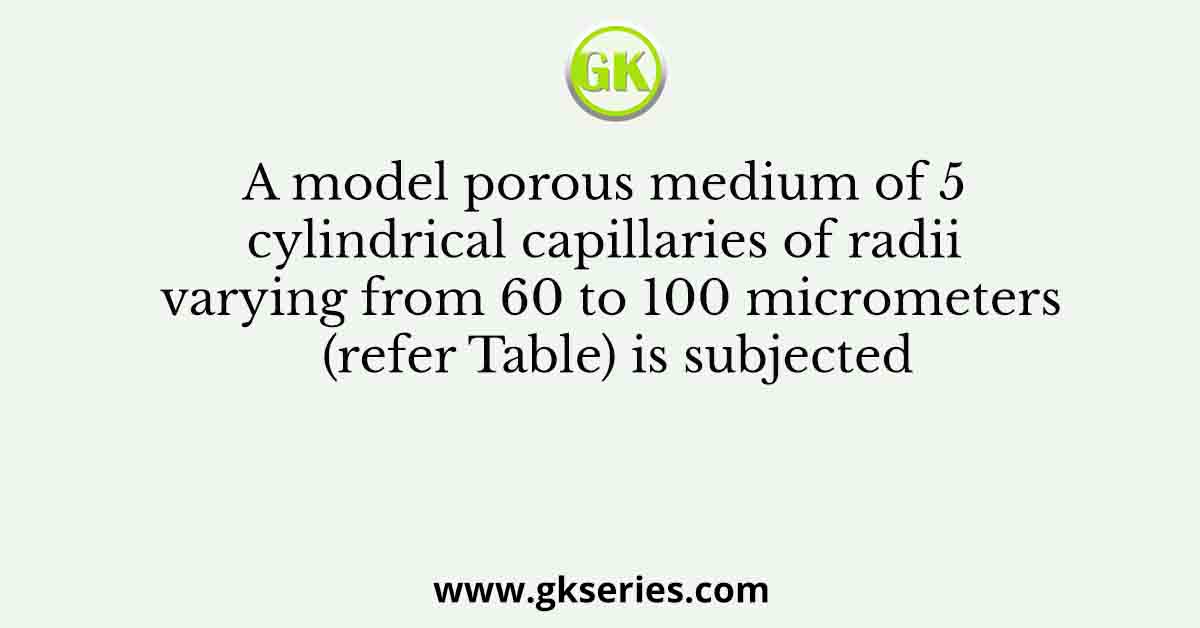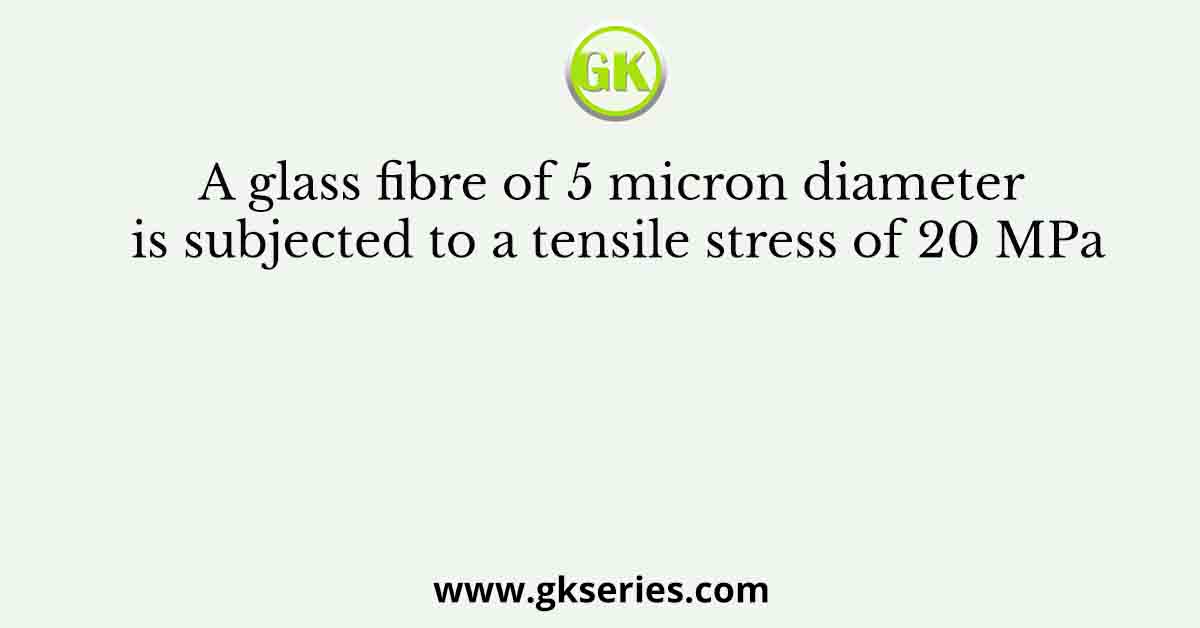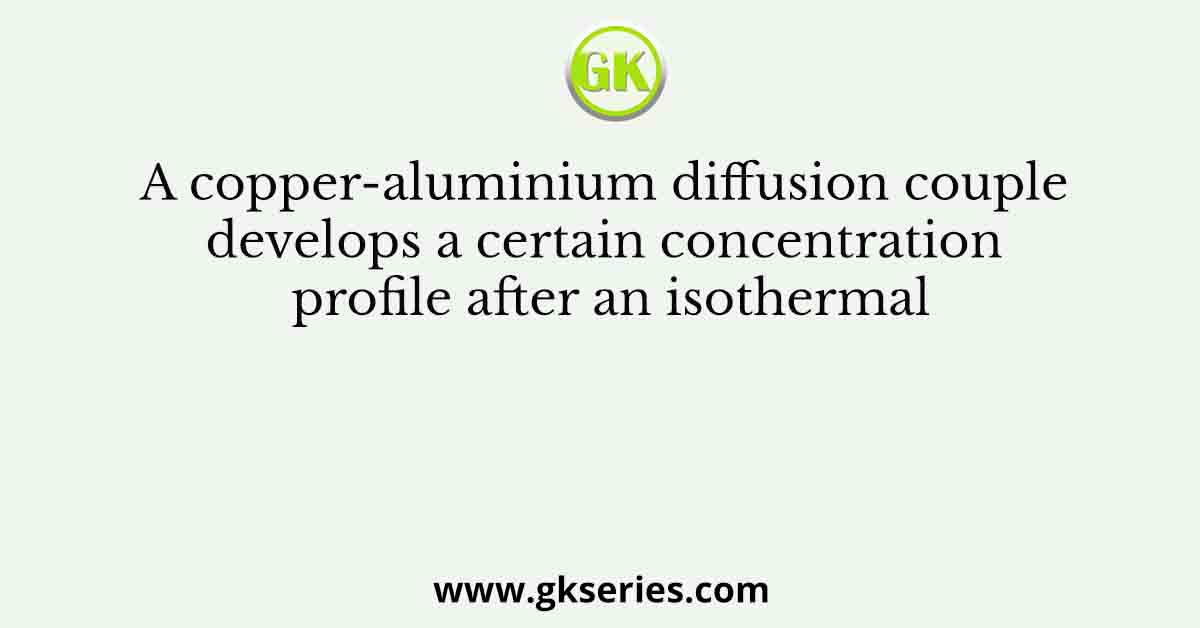
Q. A model porous medium of 5 cylindrical capillaries of radii varying from 60 to 100 micrometers (refer Table) is subjected to Mercury Injection Capillary Pressure (MICP) treatment. The capillaries are being filled in an increasing order of their entry pressure. The magnitude of (σ cos 𝜃)ai𝑟−𝐻𝑔 is 367 dyne/cm, where 𝜎 is the interfacial tension and 𝜃 is the contact angle. The minimum applied mercury pressure to achieve 50% mercury saturation in the sample is______× 103 dyne/cm2 (round off to 1 decimal place).
| Radius (μm) | Crossectional Area (µm2) | Crossectional Area (fraction) | Cumulative Area (fraction) |
| 60 | 11304 | 0.11 | 1.00 |
| 70 | 15386 | 0.15 | 0.89 |
| 80 | 20096 | 0.19 | 0.74 |
| 90 | 25434 | 0.25 | 0.55 |
| 100 | 31400 | 0.30 | 0.30 |
| Total Area = | 103620 |
Ans: 81-83
Sol:
Minimum applied mercury pressure to achieve 50% mercury saturation is when the cumulative area covered by mercury is 50%
Therefore 50% of the cumulative area covered by Hg is when the radius is 90 µm
Pc = 2σcosθ/r = (2 x 367)/(9 x 10-3) = 81555.5 dyne/cm2 = 81.55 x 103 dyne/cm2



![Determine the correctness (or otherwise) of the following Assertion [A] and the Reason [R]](https://www.gkseries.com/blog/wp-content/uploads/2023/10/Determine-the-correctness-or-otherwise-of-the-following-Assertion-A-and-the-Reason-R.jpg)
